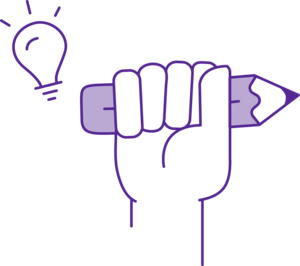Stakeholder Analysis

Managing stakeholders can help you ensure that your projects are met with success where others might fail. This activity supports you to identify your project’s stakeholders. It helps you take into account everyone who significantly impacts a decision, or could be affected by it. Identifying who has various levels of input and interest in your projects can help align decisions.
Goal
A stakeholder analysis can help you develop an effective strategy to communicate with those significant people and manage their expectations. Works well both online and face-to-face (ie: by using a physical or virtual whiteboard).
Materials
Instructions
Step 1:
(Y Axis) Power: a stakeholder’s level of influence in the system—how much they can direct or influence a project and other stakeholders.
(X Axis) Interest: the degree to which a stakeholder will be affected by the project.
Step 2:
Who will be impacted by this project?
- Who will be responsible or accountable for the project?
- Who will have decision authority on the project?
- Who can support or obstruct the project?
- Who has been involved in a project like this before?
Examples of stakeholders:
- Clients
- Leaders
- Shareholders
- Students/Participants
- Governments
- The community
- Senior executives
- Partnerships
- Trades associations
- Co-workers
- Suppliers
- The press
- Interest groups
- Customers
- Analysts
- The public
- Prospects
- Key contributors
- Key advisors
Step 3:
Prioritize the list one stakeholder at a time on the grid, based on their relative power and interest.- High power, highly interested people (Engage Closely): Keep these people fully engaged, make an effort to keep them satisfied.
- High power, less interested people (Keep Satisfied): Put enough effort in with these people to keep them satisfied, but not so much that they disengage over too much information.
- Low power, highly interested people (Keep Informed): Keep these people adequately informed, communicate with them to ensure that no key issues are emerging. People in this category can be very helpful in supporting you with the details.
- Low power, less interested people (Monitor): Monitor these people, but don’t disengage them with overly communicating.
For example: Your shareholders are likely to have high power & influence over your projects and high interest in them. Though, your coworkers may have high interest in your projects but won’t have power over them.
Step 4:
Discuss specific strategies with or for each stakeholder:
- Who needs to be informed of what, and when
- Who needs to be consulted about what, and when?
- Who is responsible for engaging each stakeholder?
- What motivates them most of all?
- What financial and/or emotional interest do they have in the outcome? Is it positive or negative
- What is their current opinion of your work? Is it based on good information?
- Who influences their opinions, and who influences their opinion of you? Are these influencers actually key stakeholders?
- What might turn them around to support your project?
- How might you manage any opposition?
Summarize your stakeholders by color-coding them in 3 colors. Advocates & supporters are green, critics are red, and neutral stakeholders are yellow.
The completed analysis image shows us that more effort will be put into persuading Simpson and Moss of the benefits of the project, whereas Olsson, Ali, and Adebayo need to be engaged as powerful supporters.
Facilitator notesCreate a Stakeholder Analysis for a new project, role, or idea. Consider if you are communicating effectively with your stakeholders. Identify any actions you could take to get the most from your supporters, and how you could win over any critics or blockers.
Attachments
- Stakeholder-analysis-cover.png
- STAKEHOLDER ANALYSIS 2B.png
- STAKEHOLDER ANALYSIS 1.png
Background
Adapted from stakeholder analysis framework – from Hovland (2005)
Source: Hyper Island toolbox
Hyper Island designs learning experiences that challenge companies and individuals to grow and stay competitive in an increasingly digitized world. With clients such as Google, Adidas and IKEA, Hyper Island has been listed by CNN as one of the most innovative schools in the world
Author
Hyper Island designs transformative learning experiences to enable growth – for individuals and for businesses. Unlike typical education or service providers, we follow a tried-and-tested methodology and a wide network of real industry experts. Through our global network of schools and business services, we put people at the heart of innovation, leadership and change – for success today and tomorrow.